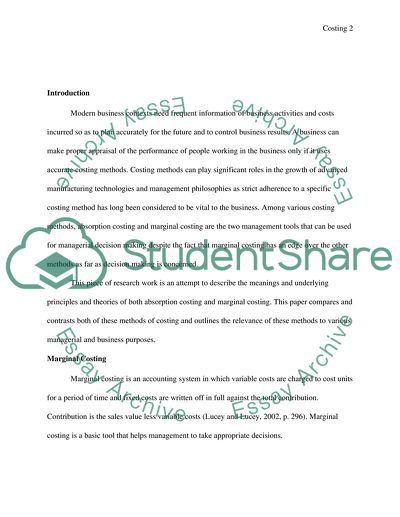Cite this document
(The Basic Differences between Absorption Costing and Marginal Costing Coursework - 1, n.d.)
The Basic Differences between Absorption Costing and Marginal Costing Coursework - 1. Retrieved from https://studentshare.org/finance-accounting/1735819-accounting-and-finance
The Basic Differences between Absorption Costing and Marginal Costing Coursework - 1. Retrieved from https://studentshare.org/finance-accounting/1735819-accounting-and-finance
(The Basic Differences Between Absorption Costing and Marginal Costing Coursework - 1)
The Basic Differences Between Absorption Costing and Marginal Costing Coursework - 1. https://studentshare.org/finance-accounting/1735819-accounting-and-finance.
The Basic Differences Between Absorption Costing and Marginal Costing Coursework - 1. https://studentshare.org/finance-accounting/1735819-accounting-and-finance.
“The Basic Differences Between Absorption Costing and Marginal Costing Coursework - 1”, n.d. https://studentshare.org/finance-accounting/1735819-accounting-and-finance.


